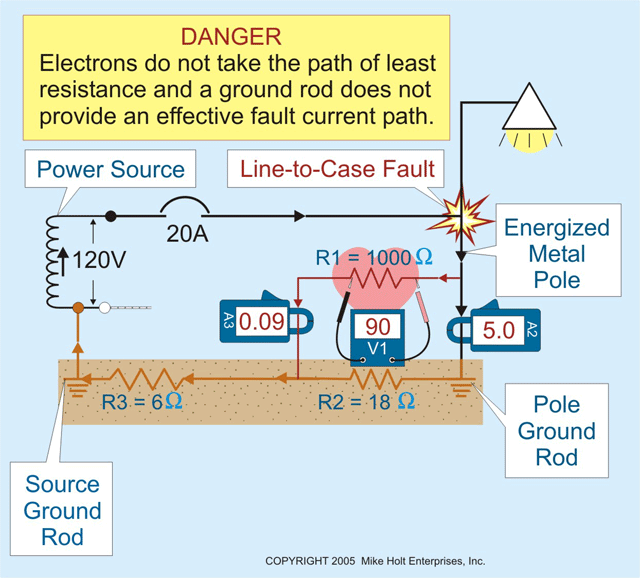Larry
I Couldn't agree with you more. And as long as this is just a hypothetical
idea and know one thinks we should go with a ungrounded residential system
I don't see a problem.
Do you agree with this? As long as we have underground branch circuits
in residential which will eventually fault to the earth we will need to
leave the solidly grounded system as is?
Because with the solidly grounded three wire single phase system the grounded neutral is not as dangerous as a grounded line #1 or line #2 would
be. With one of the lines to ground you have a shock hazard of 240 volts instead of the 120 volts we have now.
When any conductor makes contact with the earth then you would need the GFI receptacle outside. I have went on many service calls where the wind has blown a three limb down and knocked one of the service drop conductors down onto the wet ground during a thunderstorm.I have also repaired nm romex that has come loose from the floor joist in crawl spaces and faulted in the dirt. Events like this are always going to happen.
I think this example gives a better idea of how the fault current is actually flowing at least it does for me.
Thanks for reading



